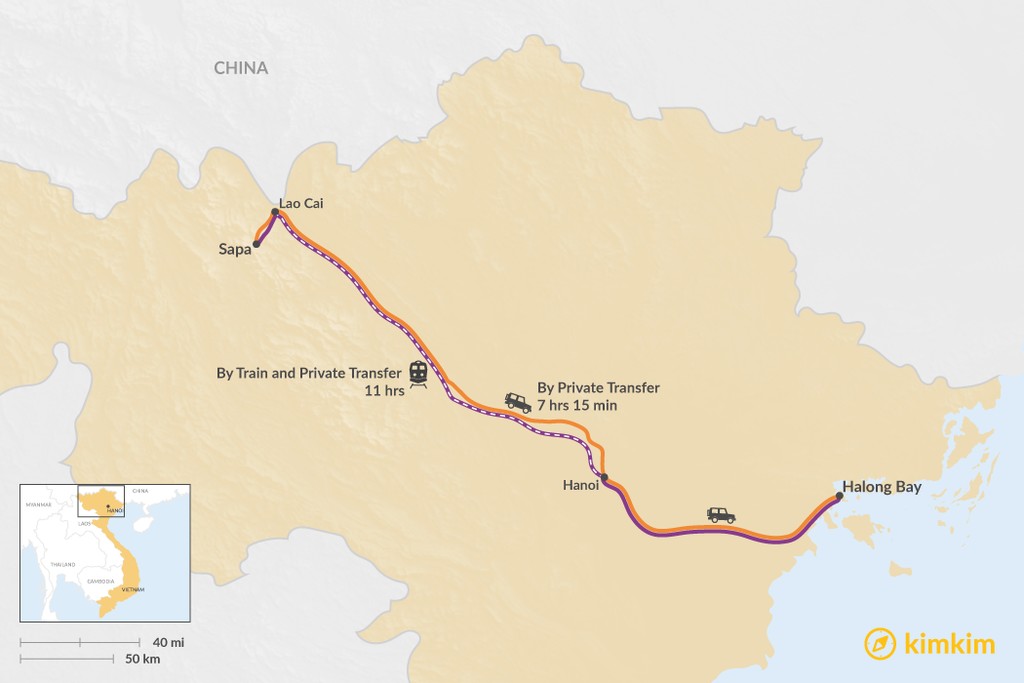
How to Get from Sapa to Halong Bay

Travelers looking to make the 306 mile (493 km) journey from Sapa to scenic Halong Bay - famous for its limestone caves and verdant islands - should consider either a combination of train and private transfer or taking a private transfer the entire route. Which mode is selected will depend on how much time travelers may wish to allot for the journey, and how many points they might like to stop at along the way.
By Train and Private Transfer
Duration: 11 hours
Numerous luxury trains have cropped up in recent years to take passengers from Sapa to Hanoi, giving plenty of good options for this first leg of the journey. For those might like to complete part of the trip at night, sleeper trains are available. Sleeper carriages are available on most trains for anywhere between two and four people. Travelers should spend some time looking at all of their train options, as this portion of the trip is eight hours long.
Once in Hanoi, an easy and relatively private transfer to Halong Bay will complete the journey in approximately three hours. The QL5B highway winds along the northern Vietnamese countryside, and is often shrouded fog that lends the scenery a particularly mystical and otherwordly quality.
Approximately an hour outside of Halong Bay, the old French colonial city of Hai Phong has lovingly preserved architecture from the period to admire and explore in the city's opera house and Queen of the Rosary Cathedral. A number of trendy cafes and restaurants are sprinkled through the city for those feeling peckish by this point in the journey.
By Private Transfer
Duration: 7 hours, 15 minutes
The fastest way to travel from Sapa to Halong Bay is to arrange for a private transfer for the duration of the journey. This option also affords travelers the opportunity to experience different topographies and points of interest along the way.
The first portion of the trip travels through the agricultural province of Yen Bai, which is full of rice terraces - the most famous of which is at Mu Cang Chai - and beautiful lakes and dams. One such lake is Thac Ba lake, which contains hundreds of islands and caves.
Further along the route, Hanoi is a natural stopping point for food and as much sightseeing as travelers may have time or interest for. The country's capital is full of exciting culinary innovation and rich history, including the 11th century Imperial Citadel, and historic Old Quarter, where the streets are approximately organized by trade and profession.
From Hanoi to Halong Bay, the same route can be followed as those who traveled the first leg of the journey by train.
